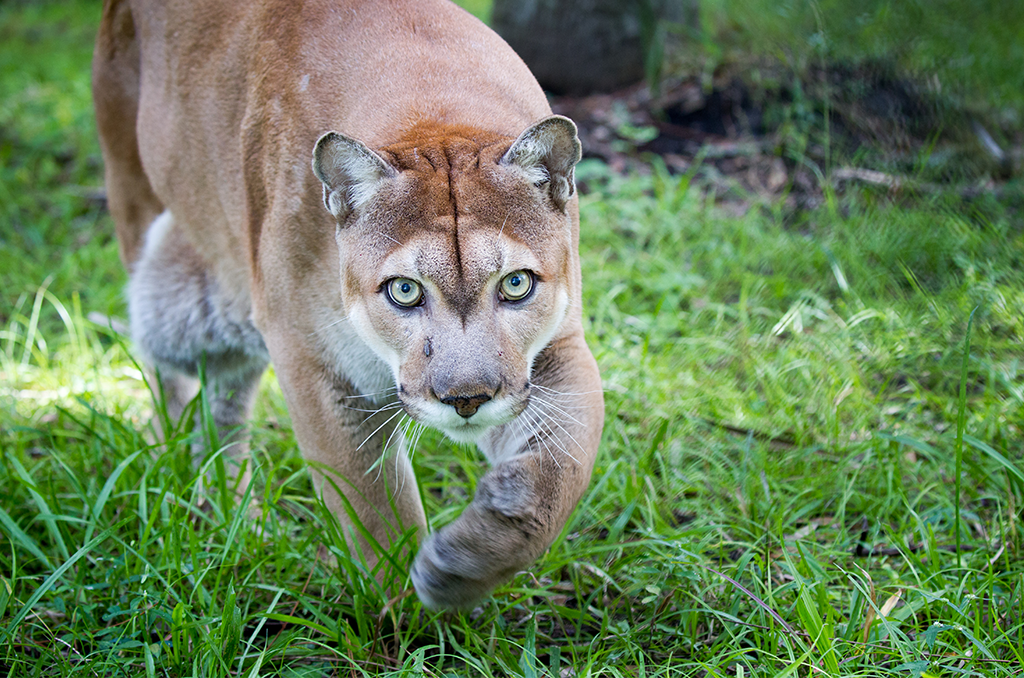Florida Panther Walks Through High Grass – Courtesy: Shutterstock – Image by Jo Crebbin
Packed between Florida’s two coasts are some of the most abundant ecosystems in the U.S., overflowing with wildlife that opts for being hidden from plain sight. The Florida Wildlife Corridor is roughly 18 million acres of natural wonder.
On Tuesday, Florida Governor Ron DeSantis signed the Florida Wildlife Corridor Act into law. This is considered a pivotal moment in efforts to preserve migration paths for animals such as the Florida panther and many others. The goal is to keep them from becoming inbred and isolated.
The bill was passed by an uncommon 115-0 vote in the House and a 40-0 vote in the Senate. In addition, a budget including ways to pay for the bill was passed. Lawmakers involved doubled funding to $100 million for Florida Forever, which preserves all environmentally sensitive lands.
The act was a last-minute amendment to an already existing bill that advocated the protection of the Wekiva River watershed near Orlando. The watershed was inserted by Jason Brodeur, a Republican from Seminole County who holds a chair in the Senate’s Environment and Natural Resources Committee.
Mallory Lykes Dimmitt, who was on two 1,000-mile expeditions traveling the length of Florida to bring attention to the need to protect corridors for wildlife, said “We’ve been working behind the scenes for years.”
“And so the passage of this act comes after a lot of hard work, and not only from the expeditions that we’ve done in previous years to really raise awareness and the visibility that this Florida wildlife for still exists, and that needs to be protected,” she said.
Lawmakers also agreed to put $300 million from federal stimulus funding toward land conservation.
This has been the most notable spending done on land conservation since voters approved a state constitutional amendment in 2014. The approval was aimed at restoring funding to historic levels.
The Act consists of several provisions, including securing any access to habitats for wide-ranging wildlife, such as the endangered Florida panther, and prevents fragmentation of critical land areas. An additional provision is the protection of the headwaters of major watersheds including the Everglades and St. Johns. The final plan is to maintain the sustainability of working farms, forests, and lands, as well as the preservation of lands and waters to protect coastal estuaries.
“I think that it is getting through that our messages are getting through both in Tallahassee and to Florida and around the state who have spent the last year really enjoying their backyards and getting out and seeing the places that are so special in Florida and it will be protected through this act,” Dimmitt stated. “It’s my wish that we continue to inspire and thank people about the opportunity to protect the Florida wildlife corridor.
“Our legislators are to be congratulated for taking this really important first step and for helping to make that protection a reality for the future.”
“This is landmark legislation for Florida conservation — as well as conservation nationwide — and it is the result of decades of advocacy and education,” wrote Jason Lauritsen, executive director of the Florida Wildlife Corridor Expedition, which is now changing its name to the Florida Wildlife Corridor Coalition.
“It is a true testament to the power of collaboration, passion, and hard work that the moment is here.”
Are you interested in Florida’s nature? For stories like this and much more: Florida Insider is dedicated to educating, entertaining and informing its readers about everything Florida. Easy to read content at the palm of your hands and covering the stories that matter.

Born and raised in South Florida, Krystal is a recent graduate from the University of Miami with professional writing experience at the collegiate and national news outlet levels. She’s a foodie who loves all things travel, the beach, & visiting new places throughout Florida.

